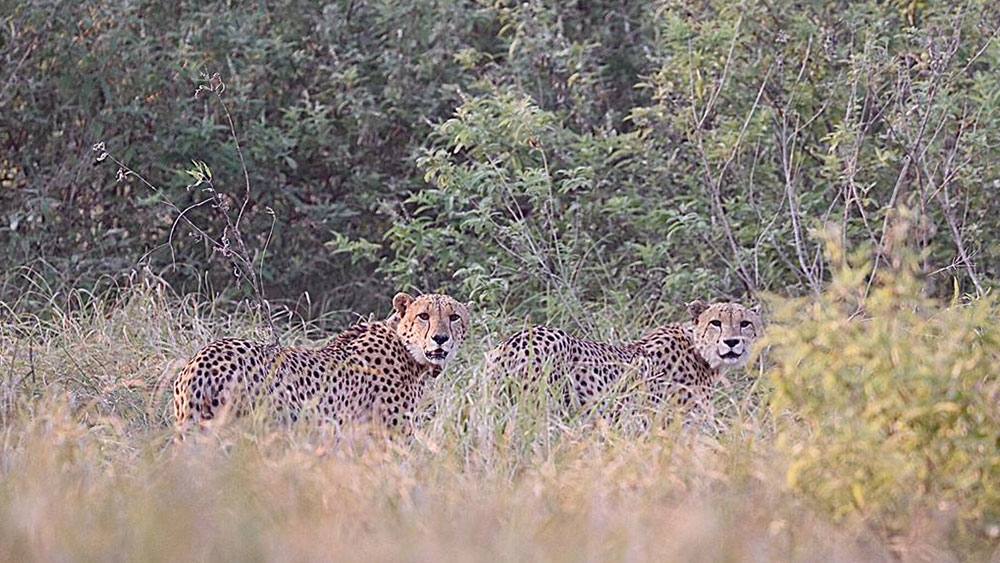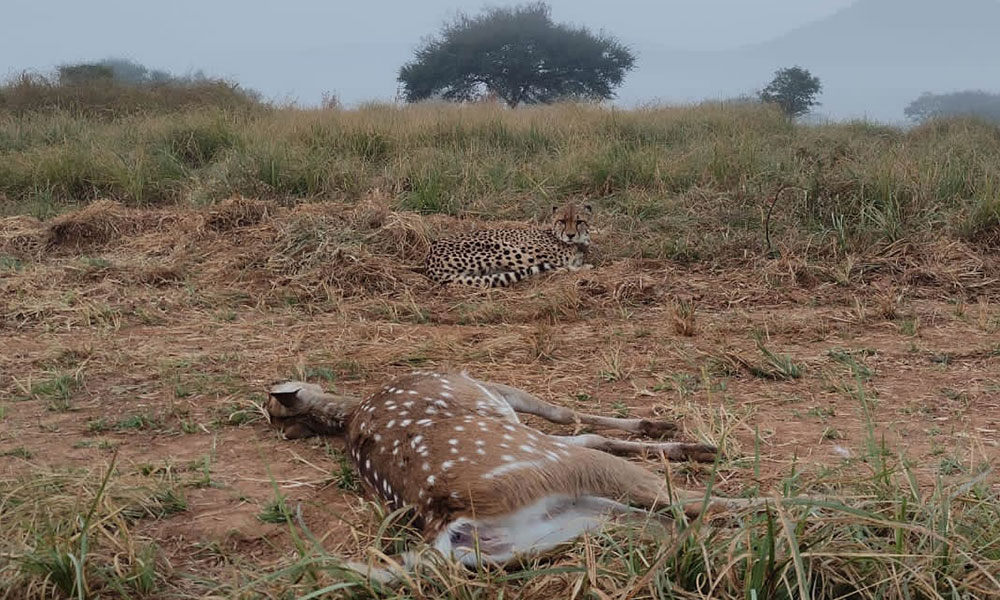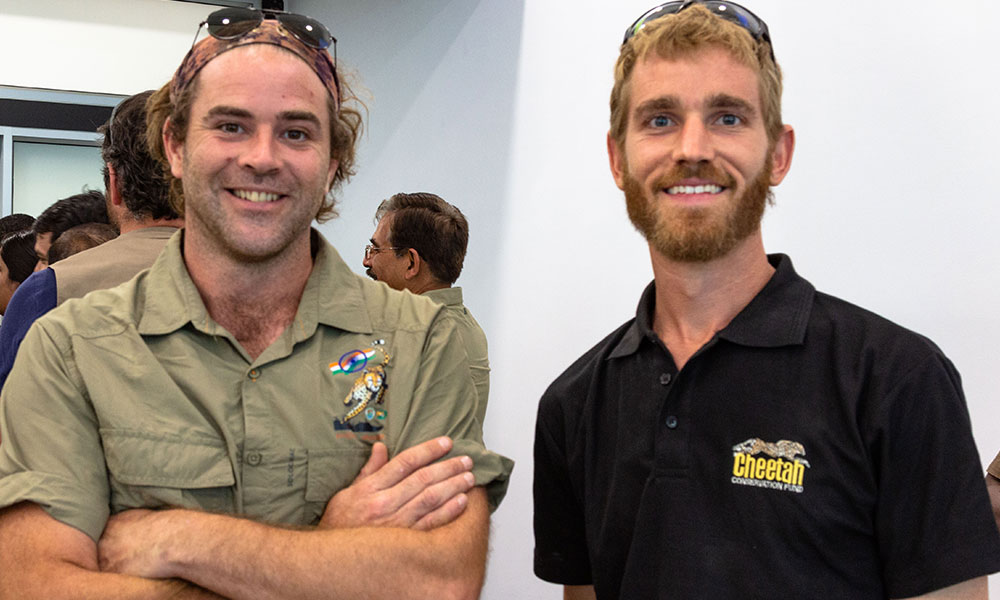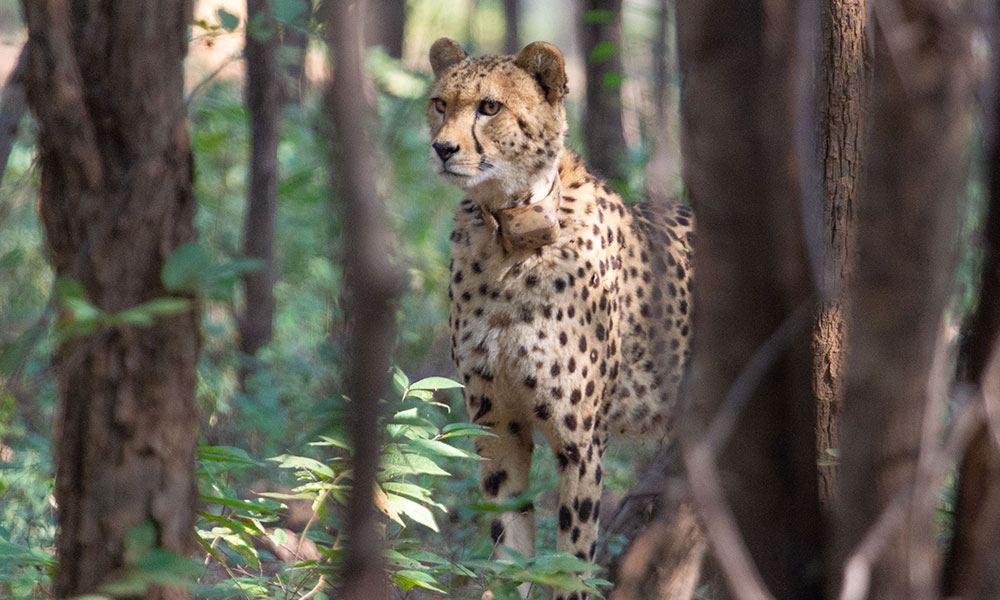Project Cheetah Update
-

- by CCF Reintroduction Team June 2, 2023

Cheetah Conservation Fund (CCF) has received many inquiries regarding Project Cheetah recently. The questions are about the health and welfare of cheetahs translocated from Africa, the carrying capacity at Kuno National Park and the availability of secondary sites for cheetahs in India. To help answer these inquiries, CCF is offering this update.
Since January, three cheetahs — one from Namibia and two from South Africa – have died in holding enclosures at Kuno National Park. On March 24, Namibian female cheetah, Siyaya, gave birth to four cubs, sired by Freddie (as in Freddie Mercury), one of the Namibian coalition males known as “The Rockstars”. The cubs were born in a hunting boma, a large enclosure stocked with prey where the mother cheetah had been living for several months. Subsequently, three of the cubs died on May 23 at about eight weeks of age. This was attributable to severe dehydration and malnutrition. Their health deteriorated rapidly during a recent heatwave that brought temperatures that reached as high as 116 degrees Fahrenheit/46.66 degrees Celcius to Madhya Pradesh, India, for several days.
Four other cheetahs from Namibia, Oban, Freddie, Elton and Aasha, were released into the unfenced wilds of the park. The four are doing well, exploring and hunting independently. Project Cheetah field teams are monitoring their movements. In the case of Oban, a lone cheetah that ventured outside the bounds of the park twice, the team successfully intervened to bring him back. After the second recovery, Oban was placed inside a 200-hectare boma along with two female cheetahs in attempt to increase his likelihood of being anchored to the area by familiar females after he gets released back into the park.
While deaths are never a preferred reality, they were calculated into anticipated losses in the first year for the reintroduction (˜50%). Together with the first successful litter, we hold that Project Cheetah is well ahead of any calculations made before the animals were translocated.
Given our organisation’s 33-year history working with cheetahs in the wild, CCF is not surprised by the numerous challenges facing a reintroduction initiative as unique and ambitious as Project Cheetah. It is the first attempt to return this species to India, and there is no precedent. While sad events, the deaths of the three cheetahs will not deter the international team of scientists, experts and government agencies committed to the project’s success. This is a long-term endeavour.
Looking forward, the team can expect to face additional challenges after more cheetahs are released into unfenced areas of Kuno National Park. The leopard is a natural competitor of the cheetah, but in India, the density of leopards at Kuno National Park is far greater than in African ecosystems, which may lead to increased pressure on the cheetahs. In addition, Kuno has other large carnivores that are not known to cheetahs, including wolves, sloth bears, dhole dogs and occasionally a dispersing tiger that wanders through from a nearby reserve. Any interactions among cheetahs and these species will be precedent setting in modern times.


CCF’s published research and others has shown that cheetahs range widely during the initial few months after being moved into unfamiliar territory. These movements are unpredictable and depend on many factors. But it is possible that cheetahs will stray from the park and encounter human populations and livestock. Project Cheetah has plans to help manage human-wildlife conflict situations, including cheetah education in villages around the park and a compensation scheme for paying farmers if livestock losses occur, to cut down on potential for retribution killings and poaching. After several months, CCF believes the cheetahs will establish their territory and settle into home ranges.
As for the cheetah carrying capacity of Kuno National Park called into question by a group of German researchers based in Namibia offering a spatial ecology model, CCF echoes Project Cheetah’s sentiments; “Firstly, it is impossible to determine the precise carrying cheetah capacity in KNP until the cheetahs have properly established their home ranges and secondly, the home ranges of cheetahs can overlap substantially depending on the prey density and several other factors. While many have made predictions about the anticipated carrying capacity of cheetahs in KNP based on other ecosystems in Namibia and East Africa, the actual number of animals that the reserve can accommodate can only be assessed after the animals are released and have established home ranges. Cheetah home-range sizes and population densities vary tremendously for different cheetah populations in Africa and for obvious reasons, we do not have useful spatial ecology data for cheetahs in India yet.”

By responding to each challenge, CCF has noted Project Cheetah’s field teams are building India’s cheetah learning curve rather quickly. They are being exposed to a variety of veterinary health issues and behaviours associated with free-ranging cheetahs. Because this is a long-term project, with each of these lessons learned, the chances for overall success increase. For this reason, CCF staff remained on the ground with the Namibian cheetahs from arrival on 17 September 2022 until the end of April 2023. Our goal was to help ensure a smooth transition by sharing our organization’s expertise and to provide capacity building to help set up the project for the long term. We hope to be back on the ground in India again soon.

From its inception, Project Cheetah has considered secondary and tertiary sites for these animals, so as not to put all of India’s cheetahs in one basket, so to speak. Whatever location(s) are chosen, cheetahs will contribute to the restoration of grasslands and the development of large open systems across the landscape, covering across a greater swath of the country. For these reasons, the conservation value of cheetahs to India is priceless, and it makes all the work in facing down the challenges of a reintroduction worthwhile.
It’s too early to label Project Cheetah a success, but so far the cheetahs have shown every ability to survive in India. There’s a long road ahead and there will be more setbacks, but from the perspective of the longest-running cheetah conservation project in Africa, CCF considers things in India are moving well.
CCF believes in Project Cheetah and is proud to help support this effort. CCF is excited to conduct ongoing training for Project Cheetah officers and field teams, both in Namibia and in India. CCF will continue to offer its assistance as requested, with the goal of transferring CCF’s vast institutional knowledge of the species to the many agencies and teams working on the reintroduction effort.

Related Reading
-
September 27, 2024
Representing the Cheetah at the AZA Conference -
February 19, 2024
The Addis Ababa Declaration for Global Cheetah Conservation




